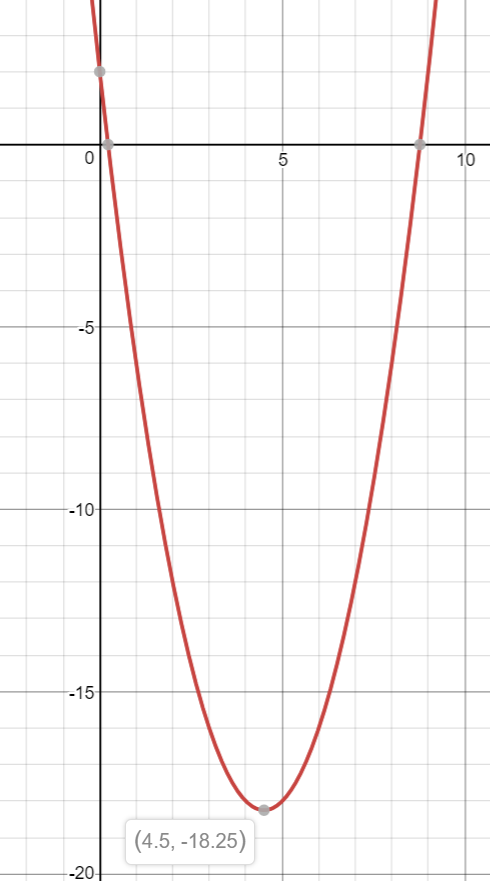How do you find the vertex and intercepts for #g(x) = x^2 - 9x + 2#?
1 Answer
Vertex:
x-intercepts:
y-intercept:
Explanation:
This equation is in standard form, or
The vertex is the highest or lowest point on the graph, depending on the coefficient (value before the
To find the vertex, we first find the
In our equation, we know that
Now let's find the
So our vertex of the equation is
To find the x-intercepts...
We plug in
Now, to solve this, we need to use the quadratic formula, which is this long equation :(
To find the y-intercepts...
We plug in
So our y-intercept is at
To show that the vertex and intercepts are correct, here is a graph of this equation:
If you need more help on this type of question, feel free to watch this video:
If you need more help on quadratic formula, feel free to watch this video:
Hope this helps!

